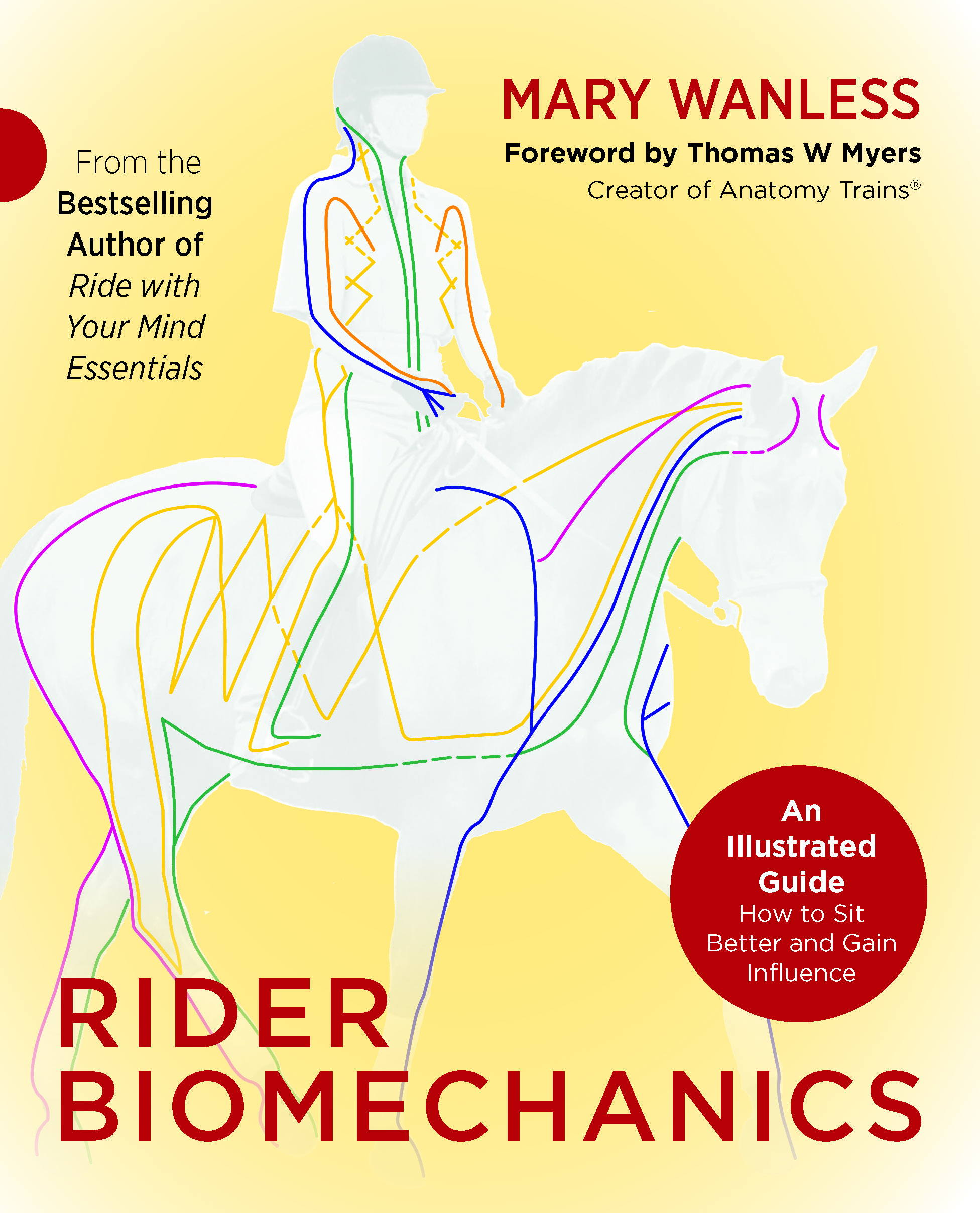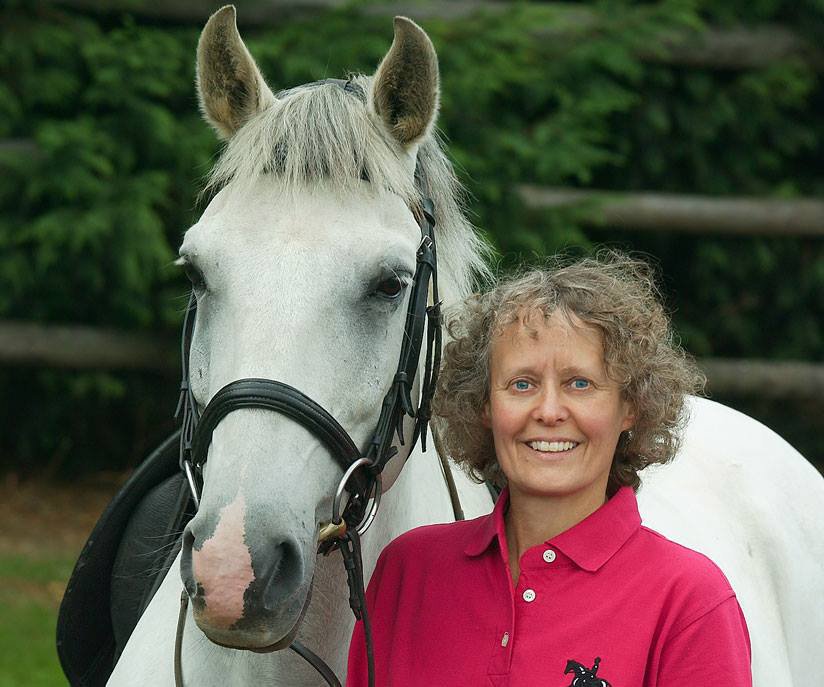
The New Anatomy of Rider-Horse Connection
Now available.GROUNDBREAKING NEW BOOK ON RIDER BIOMECHANICS
Rider Biomechanics is a highly practical book designed to build your riding skills step-by-step, with numerous photographs, diagrams, and practical exercises to do on and off horse.
What you will learn in this book!
- How talented riders sit so still and minimise the 'noise to signal ratio' inherent in their sitting
- How the answer to body control lies in stabilisation, not relaxation.
- How good balance is the result of balancing the tension between various 'strings' within the body.
- AND how to make these changes for you and your horse!

MARY WANLESS BHSI BSc
In order to learn to sit well and influence the horse like elite riders, average riders need access to a viable model of rider biomechanics and the rider-horse
interaction. The latter explains how each partner influences the other. Through many years of empirical research (that is, research based on trial and error whilst working
in the real world of riders and horses, and influenced as well by my scientific background) I have developed a model that has worked extremely well in practice. This has helped both average and world-class riders to improve their skills.
In my model of rider biomechanics, stability replaces relaxation as the rider’s trump card. It is centred stability that gives elite riders the body control to remain still, elegant and effective on top of the moving horse. The skills of training horses then have a solid foundation. Without inner stability, we are all temped to create outward stability by pulling on the reins; but even this may not stop the bumps, wobbles, or jerks that the horse cannot possibly interpret. Stable riders have reduced the ‘noise-to-signal’ ratio inherent in their sitting – they are neutral with respect to the forces of the horse’s movement. This spares the horse from wondering which of the rider's movements are meaningful, and which are noise – a body part that has moved unintentionally, a loss of balance, or a desperate grab for stability.
